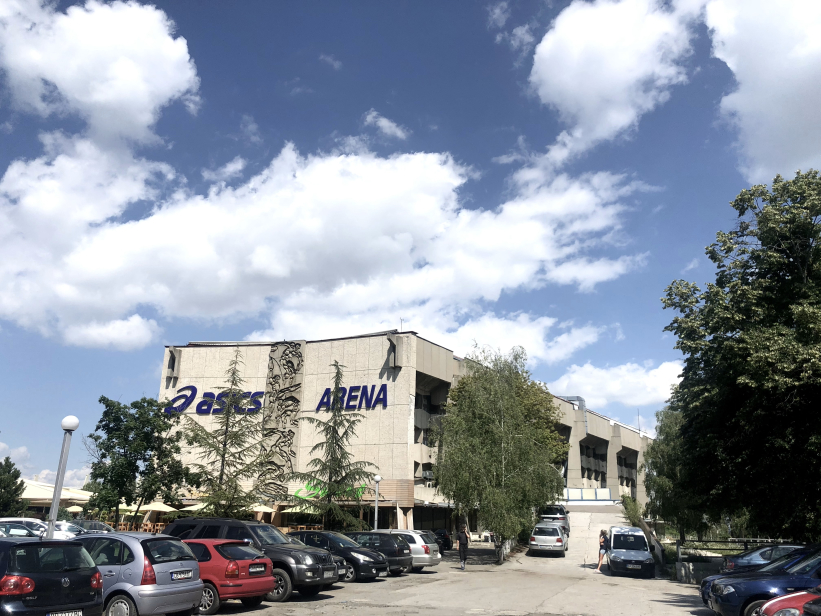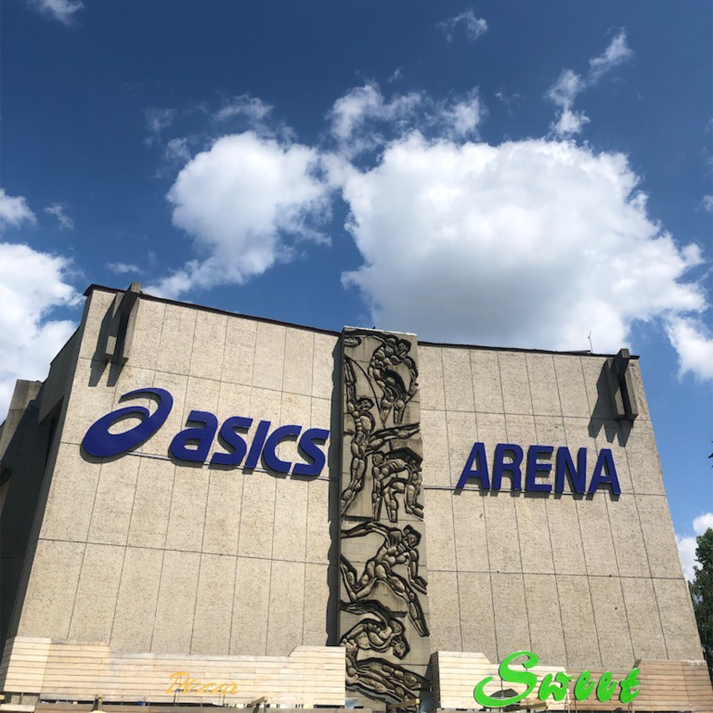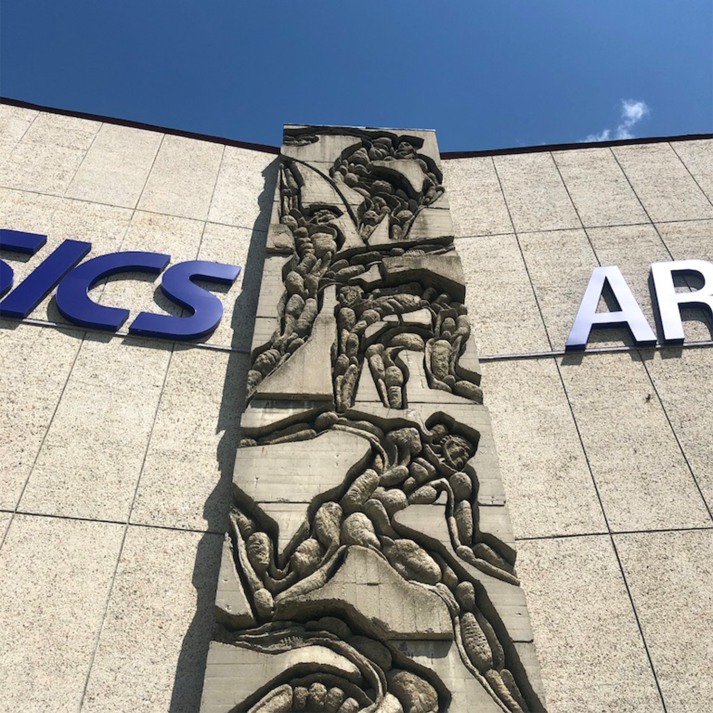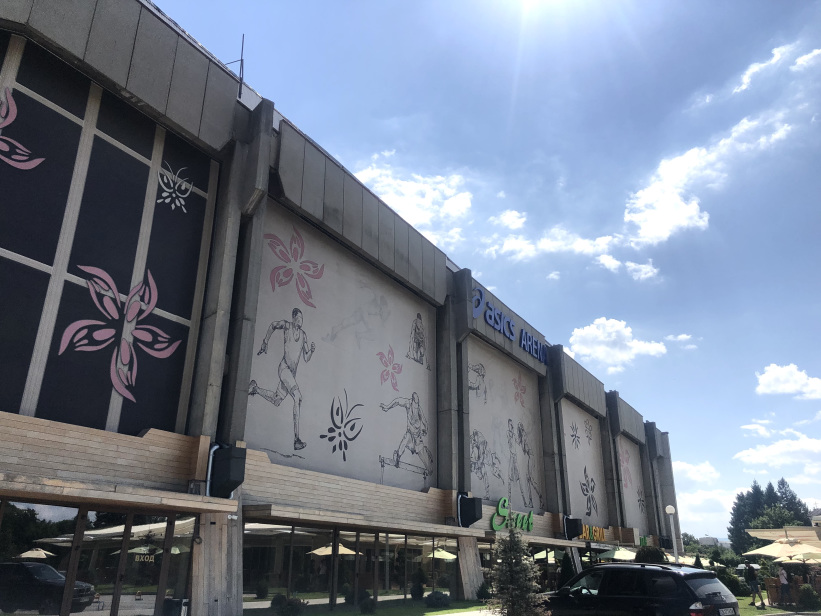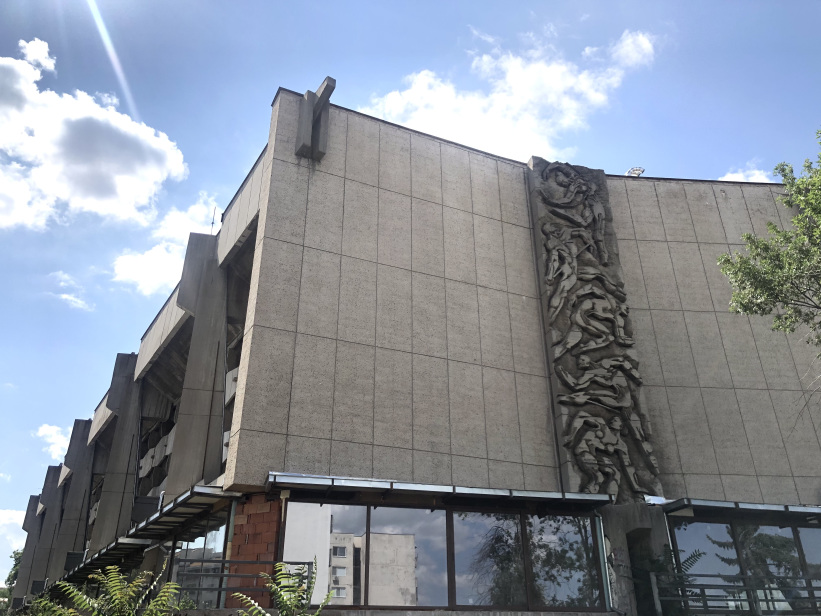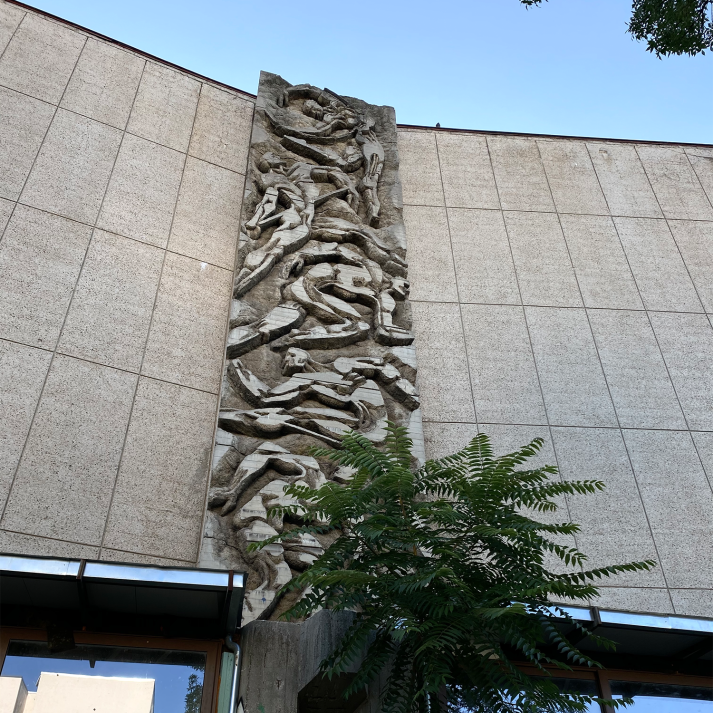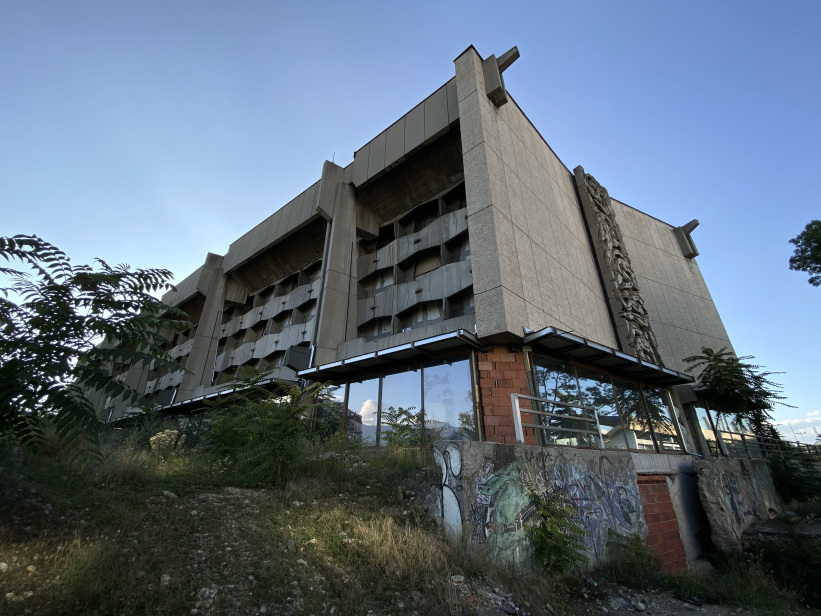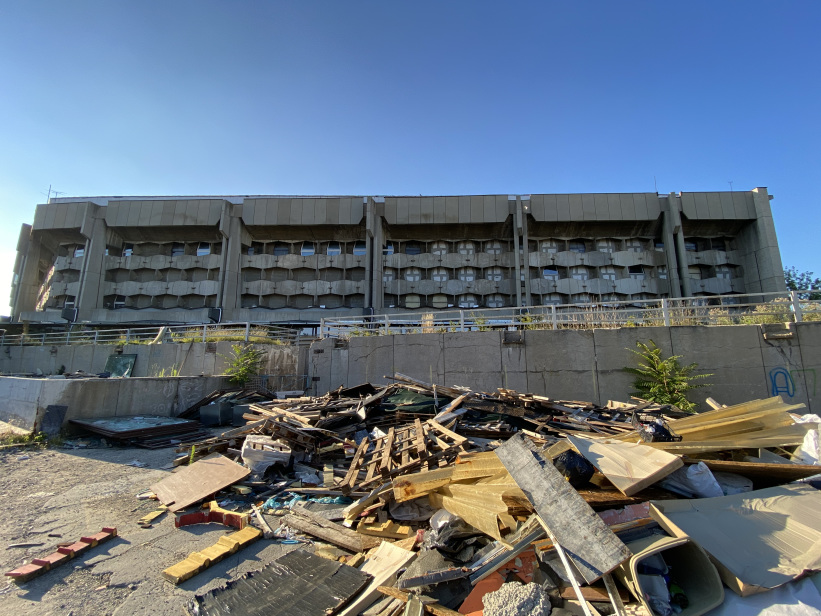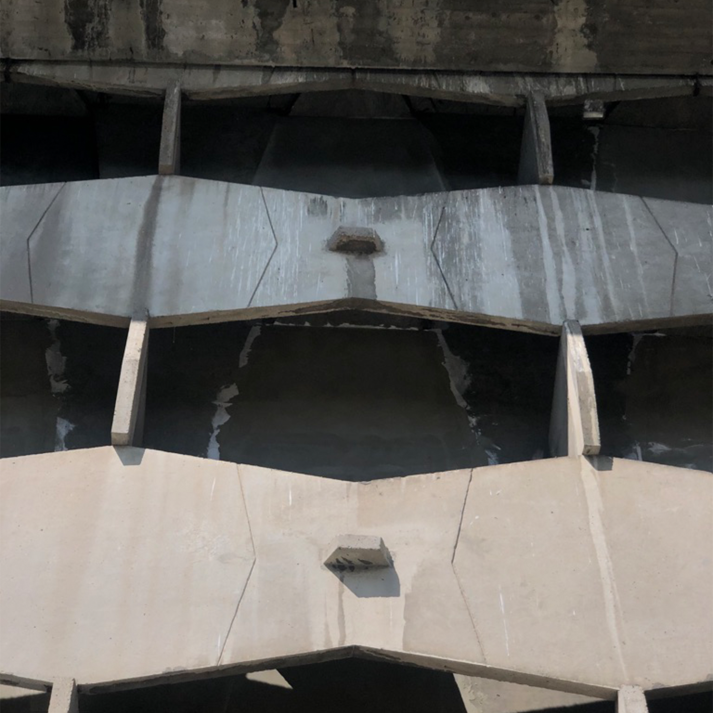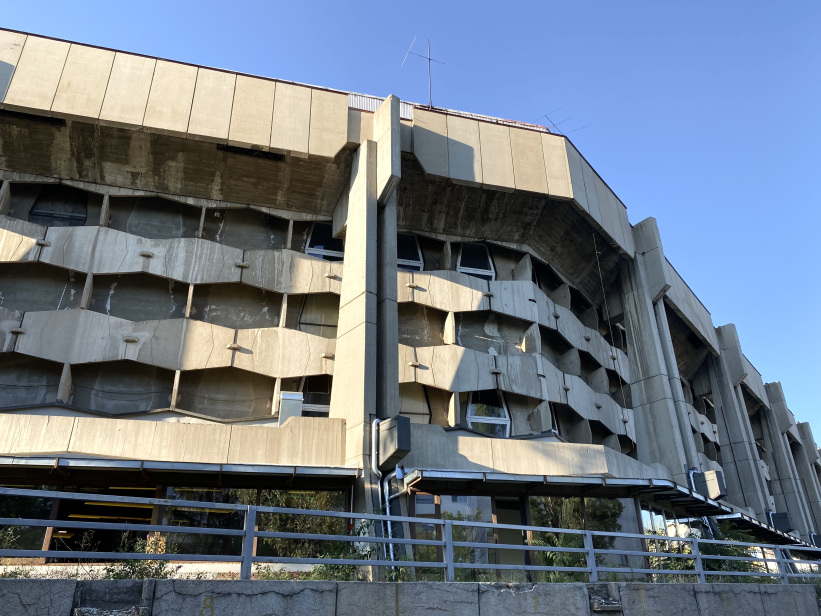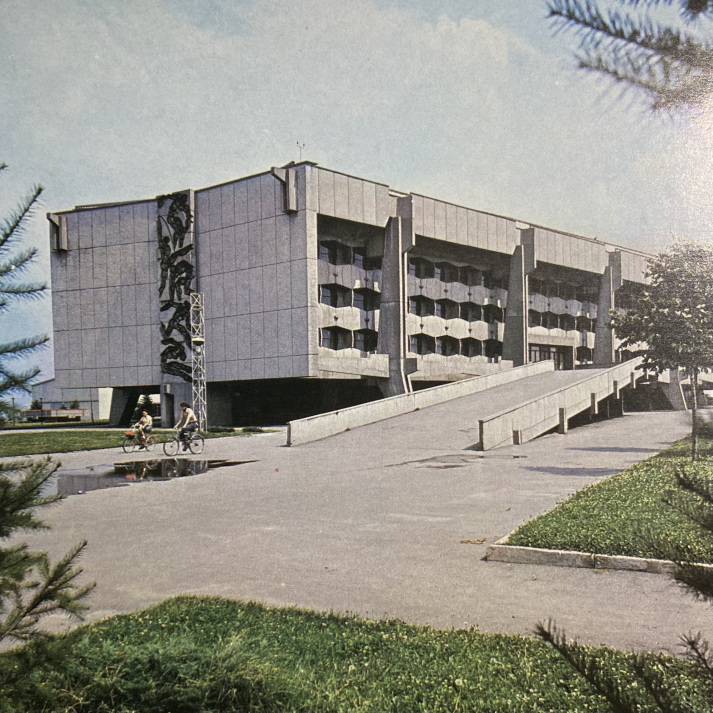Doncho Vladishki / Ivan Tatarov: Former Sports Hall “Festivalna” (today: ASICS Arena), 1968
- Sofia, Bulgaria, Show on map
- #SPO #Eastern Europe
-
The former Sports Hall “Festivalna” (or as it’s said in Bulgarian, “Sportna Zala Festivalna” or simply “Zala Festivalna”) was built as part of the planned sports training and educational complex in field sports (track-and-field), boxing, volleyball, wrestling, fitness, and swimming for higher-education institutions. The complex was spread across various locations in the central part of Sofia.
During its time, it was among the first examples of brutalist architecture in Bulgaria and one of the first sports halls in Europe for track-and-field with a 200m track.
Zala Festivalna was completed in 1968, just in time to host the 9th World Festival of Youth and Students. It accommodated for a maximum capacity of 2500 audience members at one end, and the other was reserved for commentators, tv/radio crews, journalists, special guests, and the participating athletes. In 1977, Zala Festivalna would go on to host the 38th Summer Universiade.
The artistic synthesis of the building is owed to two monumental bas-relief compositions made of heated concrete (a new technique tried in Bulgaria for the first time) on each end of the building; both on the subject “athletes”. The sculptor of the relief on the front façade is Galin Malakchiev. The sculptors of the relief on the rear façade are Vesa Voinska and Rositsa Todorova. Note the difference in the stylization of the figures.
-
Since the 1990s the sports hall, although slowly deteriorating due to a lack of effective maintenance, became a centre for events such as concerts, expos, and dance tournaments. Sporting events continue to be held here as well. Most recently, in 2017, it received its most significant renovation and earned a new name: the “ASICS” Arena (along with plastic signage mounted directly onto the main façade).
Unfortunate is the status of the renovation process and the amputation of the building’s original structural integrity. Closed off areas, bare walls, discarded construction materials, cemented windows, and questionable decorative banners leave the once clean architecture with much to be desired.
Special thanks to Stefan Spassov
